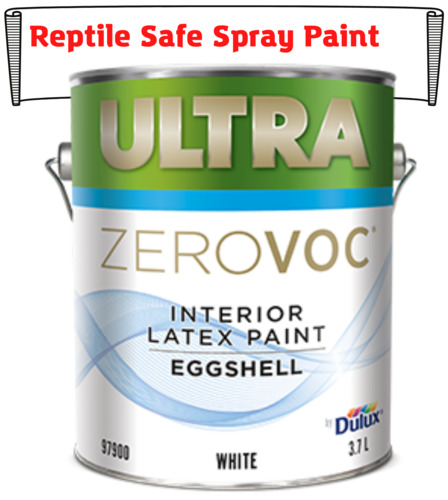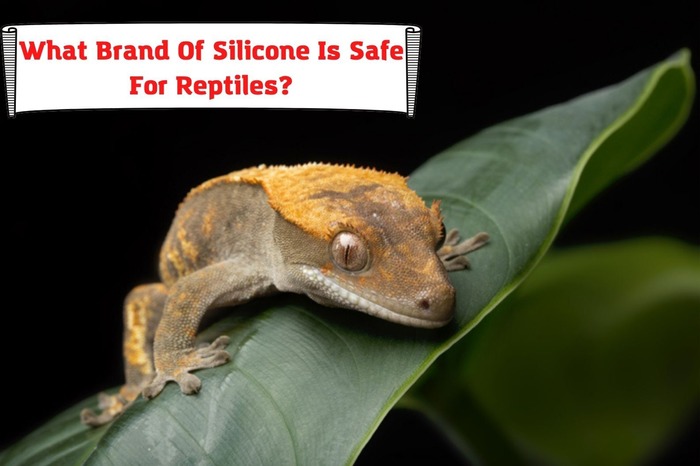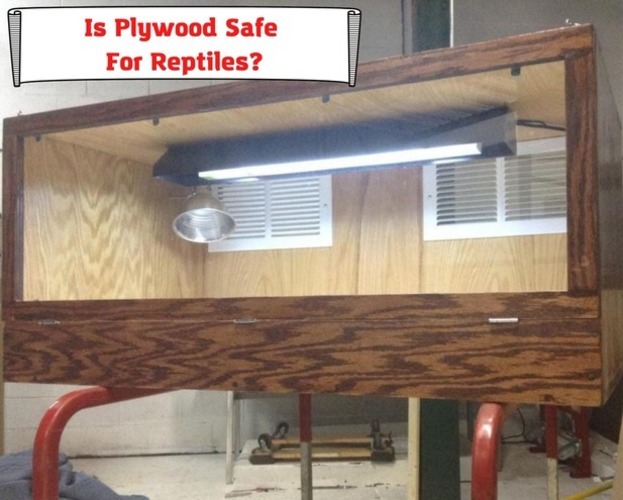
Whether for aesthetical reasons, emotional ones, or those based on practicalities. If you own a reptile, you’re probably a reptile lover, and you adore spoiling them with lovely gestures and talks.
For your reptile, you know that their tanks will be the place they will spend their whole life in. Adding color to their enclosure seems like a good gesture to pamper them.
To discuss a little more about what type of paint is safe and suitable for your reptile, this article will share a few facts and tips to guide you all the way through.
Why is Wrong Paint Dangerous?
The main issue with painting your reptile’s home is that some types of materials are toxic to their health. They can wear off or could chip off after a while and be swallowed by your reptile, causing them respiratory issues. The paint itself could lead to skin problems, or there could be other uncertainties that could lead to illness.
This doesn’t mean that you can’t paint. No, you can. You can paint your reptile’s tank in and out, but it does add a few limitations for you to consider.
What Makes Paint Dangerous?
You need good research to help you select a safer variety of paint. Here are some types you could use to paint your tank.
VOC Paint
When it comes to being toxic, VOC paint is at the top. A volatile organic compound (hence the name VOC) is released into the air when this paint is used. This paint is highly detrimental to the health of your reptile. Even after the paint is dried, the color keeps on releasing these volatile compounds into the air, and thereby, it keeps on exposing them to medical uncertainties.
Spray Paint
Spray paint, unlike traditional paints, wears off quicker. So, if you decide to use spray paint as a gesture of love for your reptile, it will most likely backfire. The dye will chip away in smaller pieces in larger quantities, increasing the chances of your pet swallowing it.
So, it’s not reptile safe in the slightest, but if you do decide to use it, be careful to cover it adequately. This care may minimize the level of wear-off and, therefore, the damage.
Wood or Oil-Based Stain
Wood or oil-based paints are toxic for the health of your reptiles. They need to be coated and sealed correctly to reduce their overall impact by using a wood finish and applying another coating.
Acrylic Paint
This paint is said to be water-based and therefore is considered to be safe for your reptiles. You only have to make sure that the paint dries off. It takes about 2 to 3 weeks for this paint to dry. A good way of improving the aesthetics with this paint variety is using less paint and dry brushing it with a darker shade.
Bathroom Paint
Bathroom paints usually have suitable characteristics for reptile-safe dye. They are generally resistant to mold, are self-priming, and have no elements of VOC in them. So, yes, if you’ve just renovated your house and have a can of paint lying around, you should know it’s not toxic to your reptile and, therefore, usable!
Zero VOC Paint
Zero VOC Paints are non-toxic paints, perfect for your reptiles. Some of the best non-toxic reptile safe paints brands in the market are mentioned below:
- Eco paints
- Olympic
- Premium
- Whisper
Paints that are non-toxic and highly durable are the type you should opt for. Generally, paint with a higher gloss level has better chances of having better durability and washability.
What’s The Difference Between VOC And Low VOC Paints?

VOC paints are not only dangerous for your reptiles; they are also toxic to the health of your family. It negatively affects the air around you, causing headaches, dizziness, teary eyes, and asthma. On the contrary, the U.S. Environmental agency comments that it could potentially cause cancer in the long run.
However, it is a face that paints with lower VOC, or no VOC don’t have the same, resounding impact on the surface as VOC paint. They are more expensive. And they give lesser coverage, which means you would have to apply more coats for similar results. More coats, more paint, more cost to pay.
However, many manufacturers claim that certain developments have made both paint types’ coverage similar. But it’s recommended that you test it out on a small area first before you finalize.
If you’re using a non-VOC paint, then ensure these three things:
- Don’t dip the paintbrush directly into the bucket. These paints do not have fungicide and therefore may get contaminated.
- Seal the bucket tightly after use.
- Don’t use anything other than water and mild soap to clean the surface within the first 30 days after applying paint.
Some Points to consider when You Select Your Reptile Safe Paint
What Paint Color Should You Use?
Now before you go in and select the paint color of your choice, you should give your reptile a good hard look and even provide them with the chance to choose the color they’re more comfortable with.
There are, of course, a few other factors you would need to think of before you decide on a shade. Here are some to guide you.
Natural Reptiles can see every color that a human being can.
So, try showing them some colors and consider their reaction before finalizing the one you’ll use to paint. The chances are that you will see them leaning in towards a hue more than the other.
These preferences will likely depend on your reptile’s prior experiences, where they had lived before, as these colors will be the ones they are most familiar with.
Black
If you’re really into excellent aesthetics, then black is your color. It also makes it harder to spot any mess in the tank, which could be good or bad.
The black color also absorbs heat. It makes the tank warmer with lesser electricity being spent. Sure, the tank will be darker now, but many reptiles prefer the dark, cool spaces while some don’t. Do your research, see what makes your pet comfortable.
White
White paint makes everything look clearer. It helps the reptile and any messes in the tank stand out. This color will make cleaning more straightforward (the cleaner it is, the healthier your pet will be), but it also means that you’ll have to clean more often than before.
Some Handy Tips for Reptile Safe Painting

Read the Labels
Knowing is important. Your pet only has you to make the right decision for them and their health. So, take the time to inform yourself of what elements your paint brand has before you purchase it for your pet.
Keep Your Reptile Somewhere Else
Pets are naturally curious, and you don’t want them to consume fresh paint, even if it is non-toxic, by mistake. So, find them a place where you know they can stay safely in until the paint on their tank is arid.
Find Open Place to Paint
Before you start picking up a brush and let your artistic side take over, you should probably find a room that isn’t used too often is packed with good ventilation.
Non-toxic or toxic, the paint you’re using will smell, and you don’t want your family or your pet to be stuck, having to bear with it for days.
Surface
Don’t forget to prepare the surface! How well you coat the place is not the only thing that will determine the results of your hard work.
Your pain will be more durable and smoother if you thoroughly clean the surface before you decide to paint.
Primer
Applying an acrylic primer before using the paint on the surface is a smart move. This will turn the surface you’re painting into a water-resistant surface, lessening the chances of chipping, melting, and wearing off the paint.
Sealer
Similarly, you can use a sealer to reduce the damage from toxic paint or make non-toxic paint even safer than before. Sealers act like a cover when applied over the pigment, acting as a barrier to keep your pet safe.
Maintenance
When you start to paint a surface, you should know that your paint will fall apart even with all the precautions you take today. This is why a repaint job once every two to three years will be necessary to maintain the coverage. An excellent way to make things easier would be to use a paint hue that’s easier to find.
Conclusion
You can choose to do this on your own, a DIY for your pet reptile, or get this done from experts. Either way, you need to stay informed. The market is edging over non-toxic varieties of paint because they are considered safer for your reptiles, and what’s in the best interest of your reptile is the best for you.
- Can Dart Frogs Swim? Some Facts about Dart Frog in the Water - February 24, 2022
- Is Superglue Safe For Reptiles? Good Brands and Types of Glue - February 21, 2022
- Can You Put A Heat Lamp On Glass? Some Concerns and Recommendations - February 19, 2022



